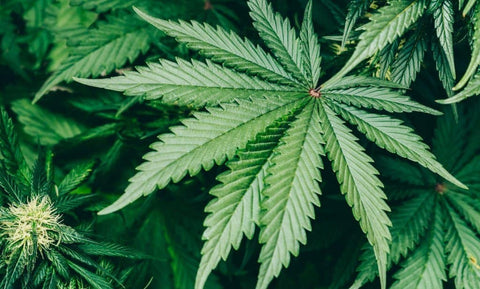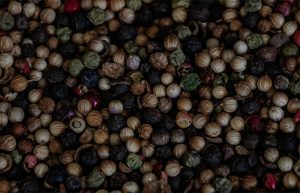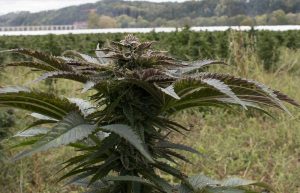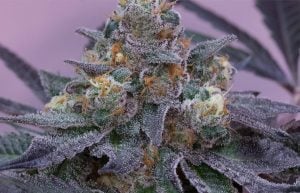PRESENTATION OF THE MAIN CANNABIS TERPENES (1ST PART)
As we have already explained to you during Our first article, the terpenes of cannabis are responsible for the aroma as well as the flavor of the plant. In this second article, we present the main terpenes contained in the cannabis plant and we describe to you what their specific properties are. Follow the leader !
WHAT ARE THE REAL PROPERTIES OF TERPENES?

For many years, a multitude of exhaustive scientific studies have been carried out in order to discover the effects such as the properties of different phytocannabinoids (especially for the THC and the CBD) of our favorite plant. However, many mysteries remain concerning Terpenes. Again, a certain number of rigorous investigations have been carried out, however the scientific evidence collected remain insufficient to be able to withdraw formal conclusions concerning the beneficial properties of terpenes.
Some of these studies confirm that terpenes actively contribute to ” The entourage effect ». This concretely means that they strengthen or amplify the beneficial action of the different cannabinoids present in the plant. It is in this way that neuroscientist Ethan Russo has shown, through a study, that terpenes could reduce the opposing effects of THC, by increasing its therapeutic efficiency at the same time. Russo comes to the conclusion, that this close relationship between cannabinoids And terpenes significantly increases the therapeutic power of cannabis in the face of different pathologies.
As we have known for some time now, all cannabinoids act directly on the receptors of the endocannabinoid system present in our body. It seems that it is the same regarding terpenes, we can even say that the latter could play the role of amplifiers according to the composition in active ingredients contained in the plant. It even seems that some terpenes would be able to modify the quantity of THC Crossing the blood-brain barrier (part that separates the brain from the blood, in order to prevent potentially harmful substances from being able to reach the brain). It is concretely in this way, that terpenes act in terms of the effect of cannabis on the human organism. Other parallel studies claim that these same compounds could also act on our internal production of dopamine and serotonin.
The effects produced by a terpene are variable, such as myrcene which produces a relaxing and narcotic effect, the lemonène which improves mental acuity and concentration. Quite recent studies, say that the Terpene β-caryophyllene would have neuroprotective properties that can benefit from the treatment of neurodegenerative diseases as Parkinson’s disease. Even if there are still certain questions, Terpenes could cause significant therapeutic value, acting in complementarity with the various phytocannabinoids present in the cannabis plant. Basically, complexity remains precisely on this point, because there are so many possible combinations in terms of availability or the presence of different cannabinoids and terpenes, as well as the proportion of each of these elements at the same time. This is the reason why it is necessary to pursue many investigations in this sense, in order to discover new concrete therapeutic possibilities and certified by the medical profession.
THE MAIN TERPENES OF CANNABIS

MYRCENE:
Myrcene or β-myrcene is a monoterpene. This is indisputably the terpene that is most commonly found in the cannabis plant, because it constitutes 50 % of the total production of essential oil. Its aromatic influence reflects a earthy mixture, musk and grass. Myrcene is the precursor of other terpenes.
A certain number of studies confirm that it is the dominant phytotorepene in a large majority of varieties with dominance Indica, whose effect is sedative and relaxing. It would seem that if the plant contains a rate of concentration greater than or equal to 0.5 % of myrcene, then its action would be more marked in this sense. Other studies mention that this terpene would be interesting to deal with insomnia problems. It would seem that it also has anti-inflammatory, antibiotic and anti-mutagen properties.
LE PINÈNE:
Pinène is a bicyclical monoterpene, which simultaneously expresses an obvious double aromatic expression and similar to that of pine and tree. Two structural isomers are naturally present in our environment: α-pinène and β-pinène, the first being the one that is most frequently found. This terpene has a protective function for the cannabis, because it has a repellant effect against pests. We can also meet him in many other species in the plant world, such as parsley, rosemary, dill, basil and conifers.
A number of scientific studies confirm that Pinène has anti-inflammatory, bronchodilators or even proven anti-criminal properties. A clinical study carried out in 2011, has shown that α-Pinène acts as a acetylcholinesterase inhibitor, and that it is capable of modulating the activity of this enzyme, which can contribute to an improvement in memory and processes cognitive. This is the reason why we can deduce from it that it offers the possibility of mitigating the effects produced by THC. Most varieties of cannabis with a high pinena content, generally produce an energizing effect.
THE LIMONENE:
Limonene is a monocyclic monoterpène, which is why certain varieties of cannabis offer us this delicious and intense citrus scent. We realize that varieties containing a high level of fireflies produce an invigorating effect. We find this terpene in certain aromatic herbs such as rosemary, mint, and also in all citrus.
From a physiological point of view, the lemonene is known for its many antibacterial, antioxidant and antifungal virtues. On the psychological level, the latter acts as an excellent natural antidepressant because it has the capacity to significantly improve mood.
Some scientific studies claim that this terpene would have the power to help restore homeostatic balance. While knowing that the imbalance of the neuroendocrine and immune function (which directly affect homeostasis), is directly linked to psychosomatic or psychiatric disorders, limonene could act effectively on the treatment of diseases such as depression or various anxiety disorders.

THE BETA-CARYOPHILLENE:
Β-caryophyllène is a sesquiterpene that is found quite frequently in cannabis, but also in the basilica, cloves and cinnamon. He is responsible for the slightly spicy and wooded aromatic influence of certain genetics. This allows us to logically understand that it is one of the active ingredients of black pepper. This specific terpene could be considered a cannabinoid in its own right, because it selectively combines with the CB2 receiver.
TERPINOLÈNE:
Terpinolène is a terpene which is often present in a very wide range of cannabic strains, but generally in very low proportion. The varieties in which the terpinolène is dominant are not very common. This terpene has a fairly complex organoleptic profile, because it can be described as a wooded, herbaceous and floral mixture.
It is found in the lilac, the tea tree, the apples, the cumin or the nutmeg. Studies carried out in the laboratory, and more precisely on mice, have shown that its inhalation produces sedative effects. It would also seem that this terpene has anticancer and antioxidant properties. Other recent scientific research, also explore the role of terpinolènes in the prevention of coronary diseases, using other antioxidants.
OCIMÈNE:
The Ocimène offers a soft floral and wooded perfume, quite subtle. As with Terpinolène, it is a terpene present in a very large sample of cannabis varieties, however rare are those where this aromatic component is dominant. It is also found in a large set of plants, such as hops, kumquat, mango, basil, bergamot, lavender, orchids or pepper, in variable quantities.
Ocimène is widely used in the perfume industry, due to its soft, floral and herbaceous aromatic profile. There is scientific evidence revealing its anti-inflammatory properties. In general, it is produced by a plant to act as a powerful repellant in the face of pest insects, it therefore plays a protective role.



